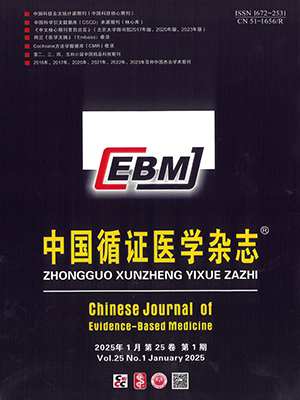| 1. |
中华医学会儿科学分会免疫学组, 《中华儿科杂志》编辑委员会. 原发性免疫缺陷病抗感染治疗与预防专家共识. 中华儿科杂志, 2017, 55(4): 248-255.
|
| 2. |
杨军, 赵晓东. 中国原发性免疫缺陷病治疗现状与展望. 中华儿科杂志, 2018, 56(3): 163-165.
|
| 3. |
Wang LL, Jin YY, Hao YQ, et al. Distribution and clinical features of primary immunodeficiency diseases in Chinese children (2004-2009). J Clin Immunol, 2011, 31(3): 297-308.
|
| 4. |
杨锡强. 免疫学与儿科临床第八讲原发性免疫缺陷病的诊断. 中国实用儿科杂志, 2000, 15(8): 504-506.
|
| 5. |
Errante PR, Franco JL, Espinosa-Rosales FJ, et al. Advances in primary immunodeficiency diseases in Latin America: epidemiology, research, and perspectives. Ann N Y Acad Sci, 2012, 1250: 62-72.
|
| 6. |
Immune Deficiency Foundation. Primary immunodeficiency diseases in America: 2007. IDF: The third national survey of patients, 2009.
|
| 7. |
Jiang F, Torgerson TR, Ayars AG. Health-related quality of life in patients with primary immunodeficiency disease. Allergy Asthma Clin Immunol, 2015, 11: 27.
|
| 8. |
Fischer A, Provot J, Jais JP, 等. 原发性免疫缺陷病易发生自身免疫病和炎症表现. 中华临床免疫和变态反应杂志, 2018, 12(2): 230-235.
|
| 9. |
杨锡强, 赵晓东. 防治原发性免疫缺陷病—全社会的责任. 中华实用儿科临床杂志, 2015, 30(9): 641-643.
|
| 10. |
Guaní-Guerra E, Jiménez-Romero AI, García-Ramírez UN, et al. Disease burden for patients with primary immunodeficiency diseases identified at reference hospitals in Guanajuato, Mexico. PLoS One, 2017, 12(4): e0175867.
|
| 11. |
赵晓东. 促进原发性免疫缺陷病的新生儿筛查. 中华儿科杂志, 2015, 53(12): 884-886.
|
| 12. |
吴俊峰, 赵晓东. 原发性免疫缺陷病早期识别. 中国实用儿科杂志, 2011, 26(11): 805-807.
|
| 13. |
余加林, 赵晓东, 郭杨杨, 等. 3月龄内婴儿原发性免疫缺陷病的诊断方案建议. 中国当代儿科杂志, 2017, 19(1): 22-26.
|
| 14. |
Bousfiha A, Jeddane L, Al-Herz W, et al. The 2015 IUIS phenotypic classification for primary immunodeficiencies. J Clin Immunol, 2015, 35(8): 727-738.
|
| 15. |
杨丽君, 李牛, 刘毅, 等. 基于靶向基因测序的原发性免疫缺陷病基因诊断方法. 上海交通大学学报(医学版), 2017, 37(3): 390-393.
|
| 16. |
Husereau D, Drummond M, Augustovski F, et al. Consolidated health economic evaluation reporting standards 2022 (CHEERS 2022) statement: updated reporting guidance for health economic evaluations. Value Health, 2022, 25(1): 3-9.
|
| 17. |
McGhee SA, Stiehm ER, McCabe ER. Potential costs and benefits of newborn screening for severe combined immunodeficiency. J Pediatr, 2005, 147(5): 603-608.
|
| 18. |
Chan K, Davis J, Pai SY, et al. A Markov model to analyze cost-effectiveness of screening for severe combined immunodeficiency (SCID). Mol Genet Metab, 2011, 104(3): 383-389.
|
| 19. |
Ding Y, Thompson JD, Kobrynski L, et al. Cost-effectiveness/cost-benefit analysis of newborn screening for severe combined immune deficiency in Washington State. J Pediatr, 2016, 172: 127-135.
|
| 20. |
Van der Ploeg CPB, Blom M, Bredius RGM, et al. Cost-effectiveness of newborn screening for severe combined immunodeficiency. Eur J Pediatr, 2019, 178(5): 721-729.
|
| 21. |
Bessey A, Chilcott J, Leaviss J, et al. A cost-effectiveness analysis of newborn screening for severe combined immunodeficiency in the UK. Int J Neonatal Screen, 2019, 5(3): 28.
|
| 22. |
Van den Akker-van Marle ME, Blom M, van der Burg M, et al. Economic evaluation of different screening strategies for severe combined immunodeficiency based on real-life data. Int J Neonatal Screen, 2021, 7(3): 60.
|
| 23. |
Kubiak C, Jyonouchi S, Kuo C, et al. Fiscal implications of newborn screening in the diagnosis of severe combined immunodeficiency. J Allergy Clin Immunol Pract, 2014, 2(6): 697-702.
|
| 24. |
Clément MC, Mahlaoui N, Mignot C, et al. Systematic neonatal screening for severe combined immunodeficiency and severe T-cell lymphopenia: Analysis of cost-effectiveness based on French real field data. J Allergy Clin Immunol, 2015, 135(6): 1589-1593.
|
| 25. |
Hays LH. Societal value of newborn screening for severe combined immune deficiency in Arkansas: An economic analysis. Public Health Nurs, 2019, 36(4): 541-544.
|
| 26. |
Thomas C, Durand-Zaleski I, Frenkiel J, et al. Clinical and economic aspects of newborn screening for severe combined immunodeficiency: DEPISTREC study results. Clin Immunol, 2019, 202: 33-39.
|
| 27. |
赵晓东. 关注新生儿原发性免疫缺陷病筛查及基因诊断. 中华妇幼临床医学杂志(电子版), 2014, 10(4): 4-6.
|
| 28. |
Immune Deficiency Foundation. SCID newborn screening campaign, 2010. Available at:https://primaryimmune.org./idf-advocacy-center/idf-scid-newborn-screening-campaign.
|




